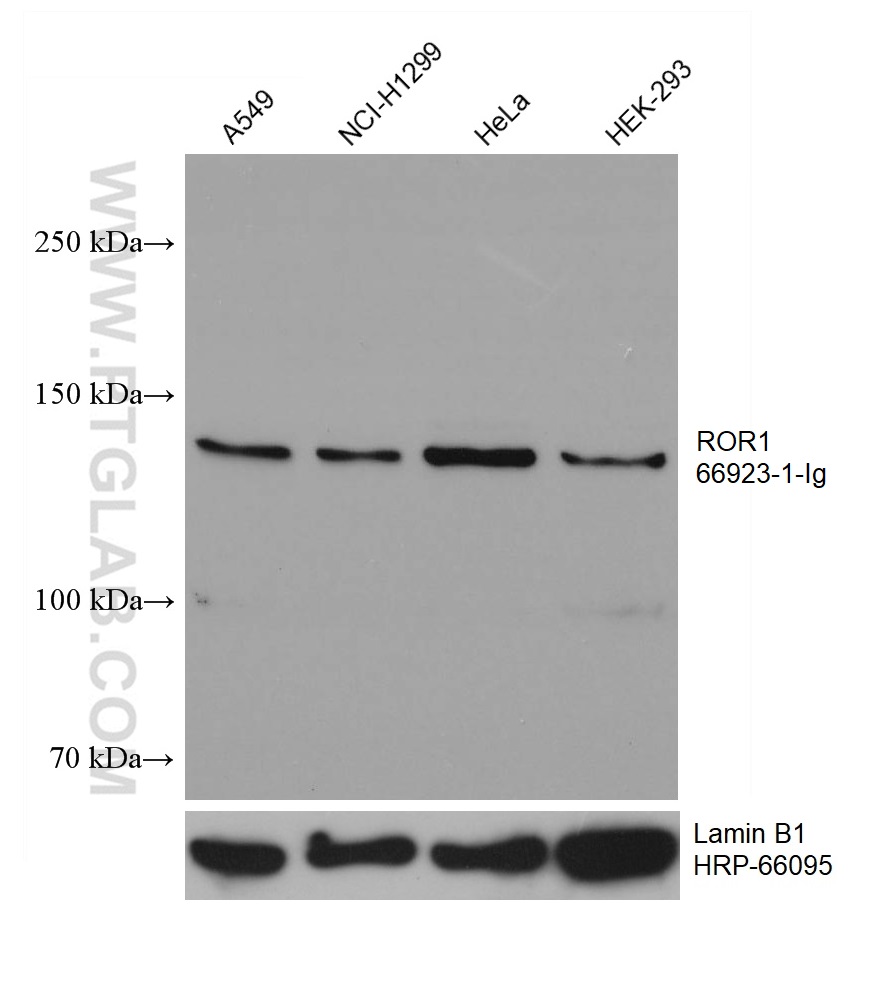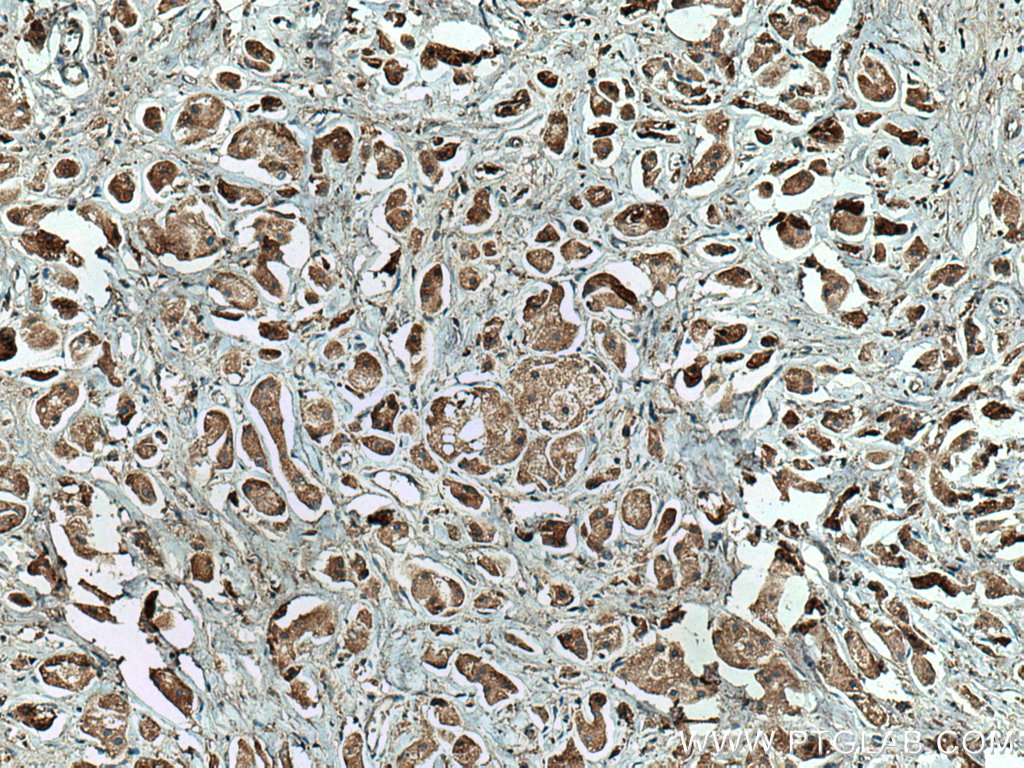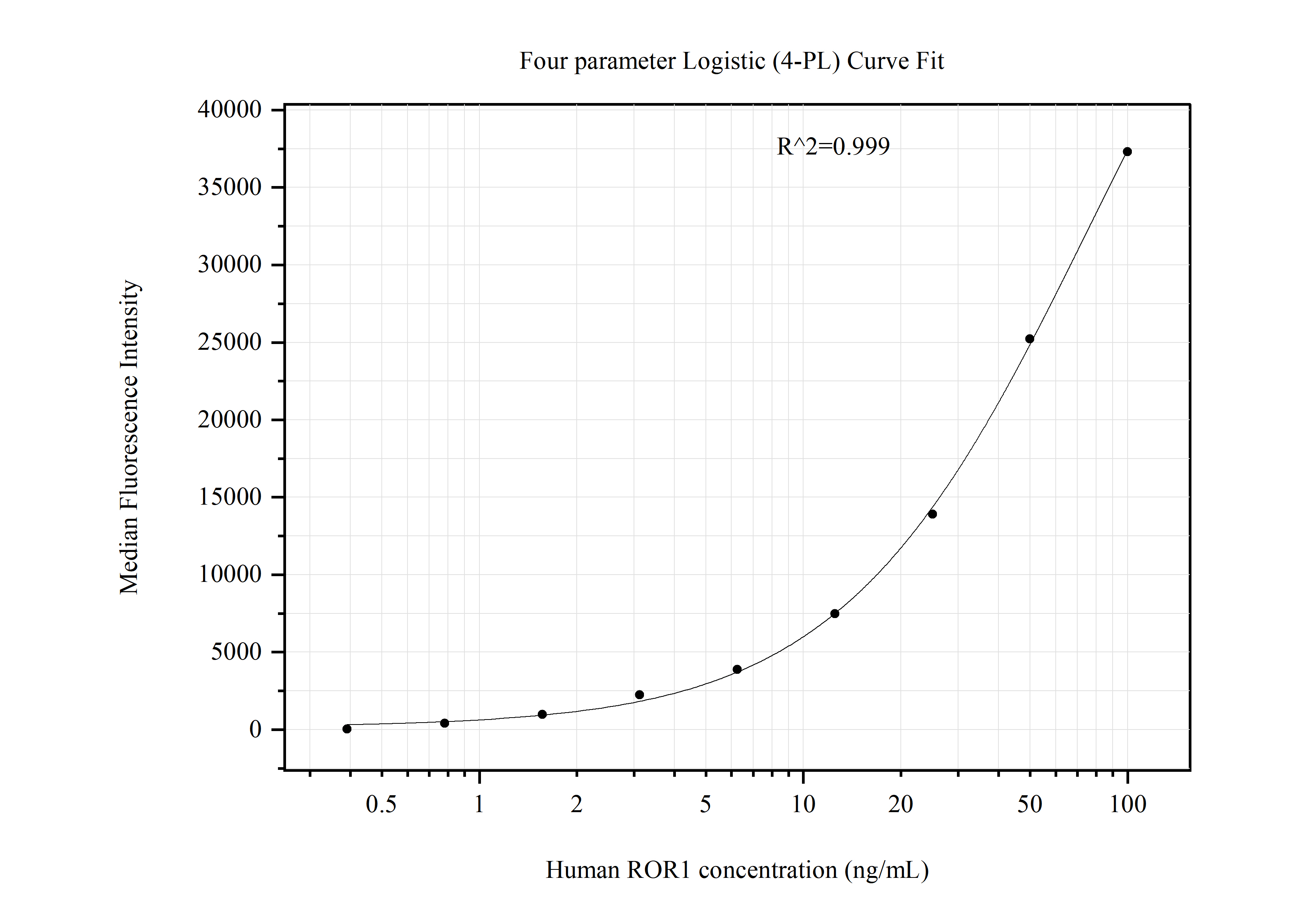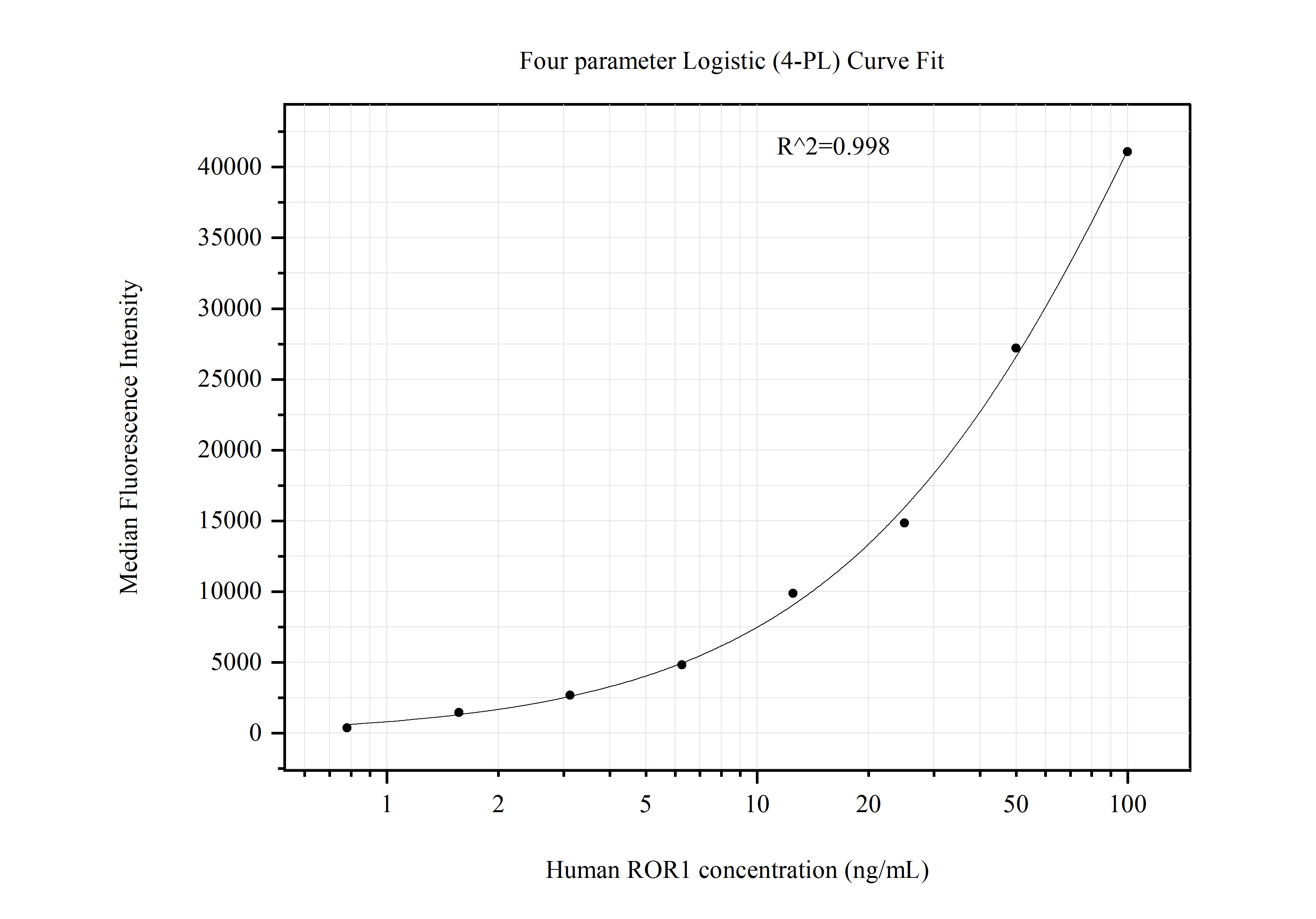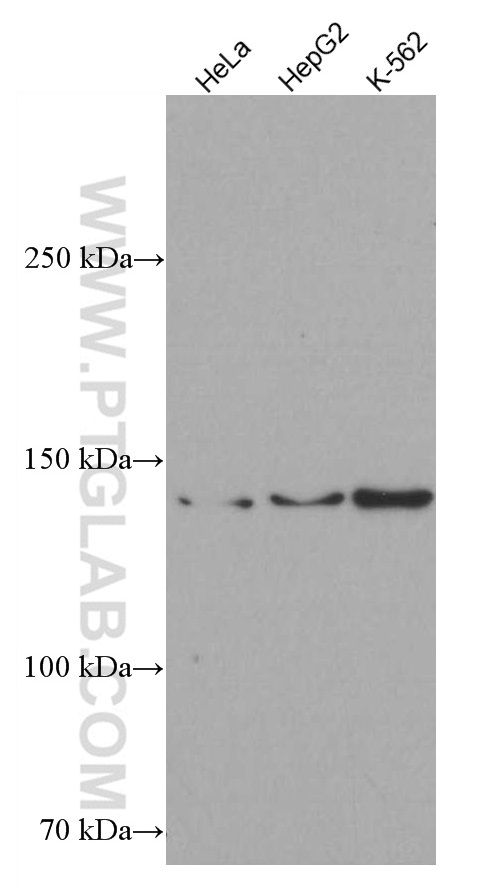验证数据展示
产品信息
66923-1-PBS targets ROR1 as part of a matched antibody pair:
MP51139-1: 66923-2-PBS capture and 66923-1-PBS detection (validated in Cytometric bead array)
MP51139-2: 66923-3-PBS capture and 66923-1-PBS detection (validated in Cytometric bead array)
Unconjugated mouse monoclonal antibody pair in PBS only (BSA and azide free) storage buffer at a concentration of 1 mg/mL, ready for conjugation.
This conjugation ready format makes antibodies ideal for use in many applications including: ELISAs, multiplex assays requiring matched pairs, mass cytometry, and multiplex imaging applications.Antibody use should be optimized by the end user for each application and assay.
| 经测试应用 | WB, IHC, Cytometric bead array, Indirect ELISA Application Description |
| 经测试反应性 | human, mouse |
| 免疫原 |
CatNo: Ag14586 Product name: Recombinant human ROR1 protein Source: e coli.-derived, PGEX-4T Tag: GST Domain: 250-364 aa of BC006374 Sequence: DECEILENVLCQTEYIFARSNPMILMRLKLPNCEDLPQPESPEAANCIRIGIPMADPINKNHKCYNSTGVDYRGTVSVTKSGRQCQPWNSQYPHTHTFTALRFPELNGGHSYCRN 种属同源性预测 |
| 宿主/亚型 | Mouse / IgG1 |
| 抗体类别 | Monoclonal |
| 产品类型 | Antibody |
| 全称 | receptor tyrosine kinase-like orphan receptor 1 |
| 别名 | 1F5D8, Inactive tyrosine-protein kinase transmembrane receptor ROR1, Neurotrophic tyrosine kinase, receptor-related 1, NTRKR1 |
| 计算分子量 | 937 aa, 104 kDa |
| 观测分子量 | 130 kDa |
| GenBank蛋白编号 | BC006374 |
| 基因名称 | ROR1 |
| Gene ID (NCBI) | 4919 |
| RRID | AB_2882250 |
| 偶联类型 | Unconjugated |
| 形式 | Liquid |
| 纯化方式 | Protein G purification |
| UNIPROT ID | Q01973 |
| 储存缓冲液 | PBS only, pH 7.3. |
| 储存条件 | Store at -80°C. The product is shipped with ice packs. Upon receipt, store it immediately at -80°C |
背景介绍
ROR1 is a member of the RTK family of orphan receptors related to muscle-specific kinase and Trk neurotrophin receptors (PMID: 18546292). ROR1 is primarily expressed by neural crest cells during embryogenesis. High expression of ROR1 is reported in many types of malignancies and is thought to be involved in tumor growth, apoptosis, and epithelial-mesenchymal transition (PMID: 26245996). The human ROR1 gene encodes a 937 amino acid protein with an Ig-like domain, a cysteine-rich domain, a kringle domain, a tyrosine kinase domain, and a proline-rich domain. The calculated molecular weight of ROR1 is 104 kDa, but ROR1 has multiple N-glycosylation sites that generate post-translationally modified ROR1 at 130 kDa (PMID: 24752542).

